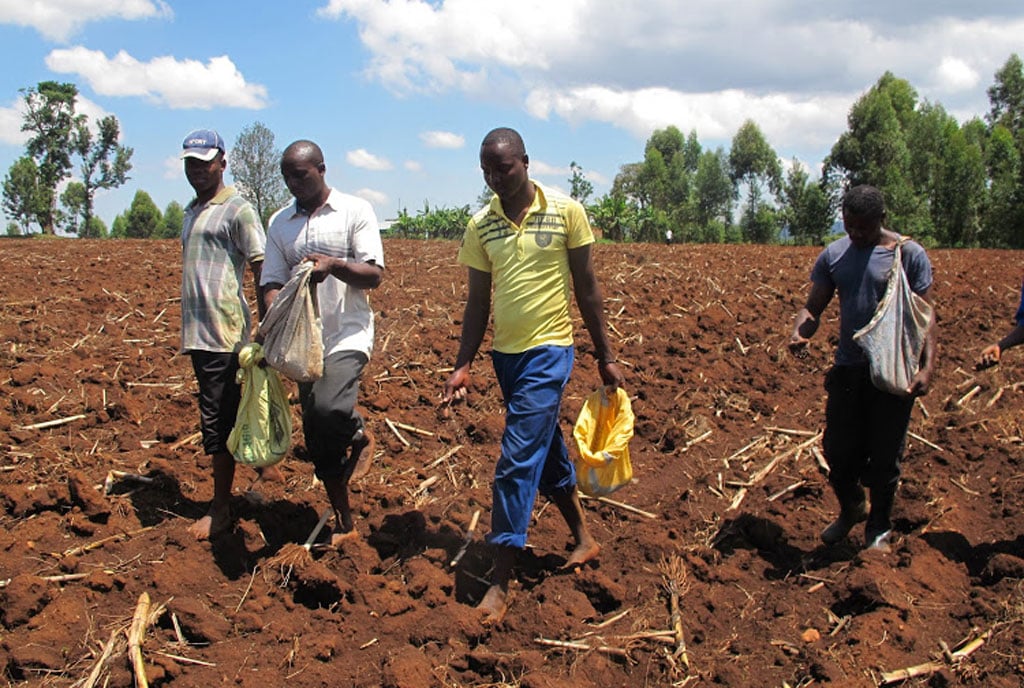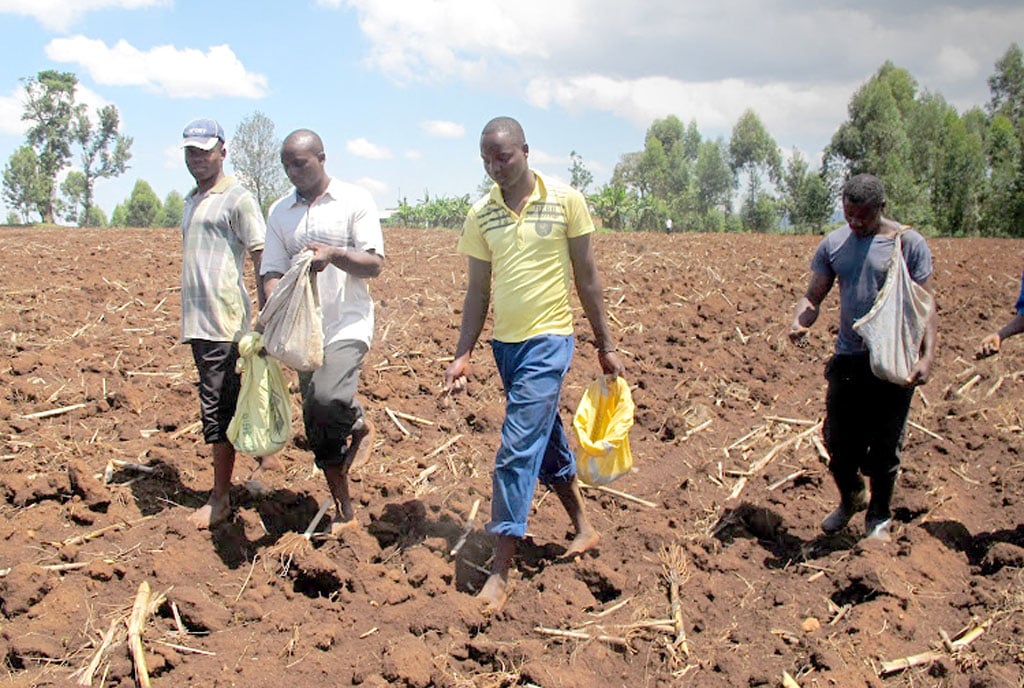Prime
Increase soil fertility with agro minerals

Farmers sowing maize this season. PHOTO/FILE
What you need to know:
- One of the most sensible ways of re- plenishing soil fertility is the use of available natural resources.
Countries in Africa including Uganda under their umbrella body the African Union have come together to promote processing of all types of minerals including Agro minerals following a standard procedure.
This is a move by geologist scientists from across African countries working under the African Mineral Development Centre (AMDC) hosted by AU in Addis Ababa, Ethiopia who have emphasised that countries should embrace value addition in the mineral sector. This way African countries will be in position to export value added minerals and earn more revenue compared to exporting minerals in raw form.
The scientists revealed this move in recent meeting in Kampala hosted by the Ministry of Energy and Mineral Development where the Pan African Resource Reporting Code was launched.
Seeds of Gold caught up with Mr Gabriel Data assistant commissioner from the ministry of Energy who doubles as the vice president of Organisation of African Geological Survey.
He discussed the importance of processing agro minerals for the benefit of the farmers in the country and below are the details.
What are agro minerals?
Mr Data explained that Agro minerals also known as stone bread or petrol fertiliser are important to the agriculture sector as they provide essential minerals to plants.
Some agro minerals occur naturally or can be processed to be used as alternative fertiliser for soil amendment.
Background
Agro minerals started with small uses most often seen in small scale home gardening but are moving to a much larger scale such as commercial farming operations that take up 100 acres of land or more. The term agro mineral was created in the 19th century and is now one of the leading research topics for sustainable agriculture.
Geologist scientists changed the focus to be more on ground nutrients, mainly on the three major plant nutrients. Nitrogen, (N), Phosphate (P) and Potassium (K) and two of the three elements are only being harvested from a geo material called potash.
Alternative sources are being researched due to limited potash supply and the cost.
At first agro minerals were used to help recreate soil conditions for exotic plants but this is no longer the case. Most farmers in the country still rely of use of organic fertiliser to replenish the soil yet natural agro minerals can be processed and applied to the soil directly.
Occurrence of agro minerals in the soil
The study of agro-minerals is termed agro geology and the scientists are concerned with what was created to focus on soil remediation to increase productivity in a low-cost manner.
While studying alternative ways to replenish ground nutrients, it has been found that agro minerals can also help mitigate other issues such climate change, water preservation and soil management. These were simple practices that occur on a much smaller scale. These include using specific minerals to enhance the aeration of the soil, control evaporation and keeping moisture.
This soil modification was the start of the agro mineral concept and has evolved into looking for alternative sources to obtain the three major nutrient elements. Remineralisation has been the term created for implementing rock powders into soils as a source of nutrients.
This process has been implemented into bigger operations and has found great success in countries such as Brazil, Germany, Norway, South Africa, Sri Lanka and Uganda.
If farmers embrace use of agro minerals with current farming practice, the system is expected to have high crop production with low soil quality.
Major agro minerals
There are various types of agro minerals in different parts of the country and processing starts with crushing the minerals into powder which can be directly mixed with soil to replenish it.
The experts explain the different types of agro minerals and these include: Limestone which exist in all parts of the country. Farmers can extract the limestones, crush it into powder to process lime which can be used as soil conditioner to reduce soil acidity.
White marble stones and phosphates which can be crushed and used to make calcium carbonate powder. This currently being processed by Sukulu phosphate and fertiliser factory in Tororo but farmers can as well do it on their own on small scale. Vermiculite which comprise of a group of hydrated laminar magnesium aluminium iron silicate. It helps to aerate soil while simultaneously retaining water and other nutrients which can be released over time in the soil.
The mineral is important in sowing seed and planting other propagated plants.
It is currently being mined and processed by Quality Vermiculite Solutions Ltd located in Mbale.
Zeolite is another agro minerals which apparently is mined and exported to companies processing fertilisers. The mineral has the ability to capture, store and slowly release mineral nutrients including nitrogen which is important in farming.
According to Data, there are minerals which the farming communities can benefit from as source of income: They include:
Pozzolana deposits occur as a result of volcanic eruption in the eastern and western parts of the country.
It is used for manufacturing cement but farmers can mine it and add value as income earning initiative because the mines are in the farming communities.
Diatomite is directly used in the agriculture sector and it exists in most parts of the country including in Packwach in West Nile. It is a very porous rock having a fine particle size and low specific gravity.
Diatomite originated from fossilised remains of diatom shells. In agriculture, it’s used in controlling livestock internal and external parasites; post-harvest crop insect pests and aflatoxins in stored feeds.
Skeletons of diatoms are made of silica. When diatomite is ground into fine particles, it is called diatomaceous earth.
Chemical fertilisers
According to the experts farming communities in Uganda are aware of chemical fertiliser usage in their farms but they are expensive, and they have other challenges such as runoffs from rainwater.
One of the major sources for chemical fertilisers is potash ore. The other concern with the potash ore is the supply is finite and is running out, hence the increase in pricing.
Potash is one of the major sources for potassium and phosphorus and one of the original agro minerals. It is however chemical fertilisers used to process potassium and phosphorus nutrients. Due to such a high demand, the ore is running in low supply which has increased its market value globally.
Rock powder usage
There is a push to move away from chemical fertilisers since it has been connected to groundwater pollution.
There has been a shift into looking at grinding rocks into a powder that can be incorporated into the ground as a new way to add nutrients to the soil.
With this concept it has been determined that the rock source is very important because the rock can have unwanted elements that can be toxic for both the plant and the humans ingesting it.




